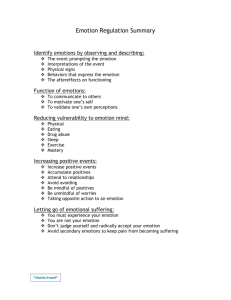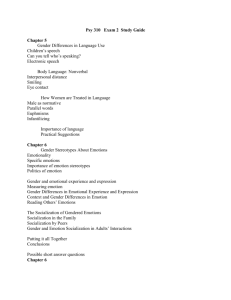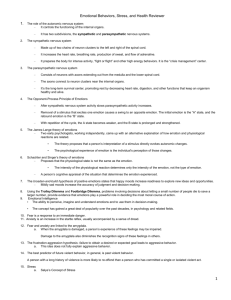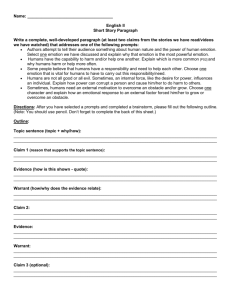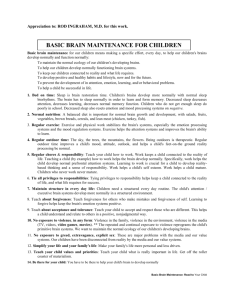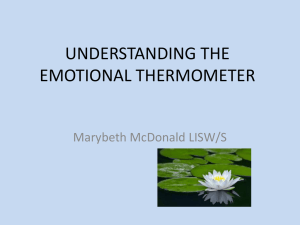AP Psychology Chapter 6 Motivation and Emotion Study Guide
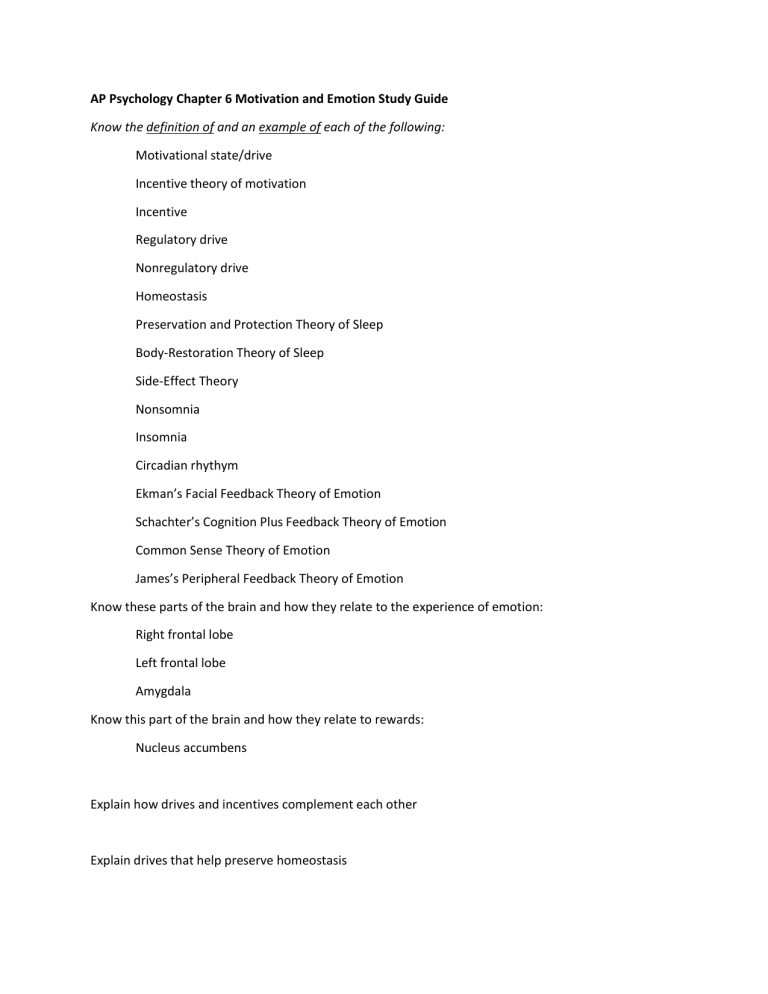
AP Psychology Chapter 6 Motivation and Emotion Study Guide
Know the definition of and an example of each of the following:
Motivational state/drive
Incentive theory of motivation
Incentive
Regulatory drive
Nonregulatory drive
Homeostasis
Preservation and Protection Theory of Sleep
Body-Restoration Theory of Sleep
Side-Effect Theory
Nonsomnia
Insomnia
Circadian rhythym
Ekman’s Facial Feedback Theory of Emotion
Schachter’s Cognition Plus Feedback Theory of Emotion
Common Sense Theory of Emotion
James’s Peripheral Feedback Theory of Emotion
Know these parts of the brain and how they relate to the experience of emotion:
Right frontal lobe
Left frontal lobe
Amygdala
Know this part of the brain and how they relate to rewards:
Nucleus accumbens
Explain how drives and incentives complement each other
Explain drives that help preserve homeostasis
What neurotransmitter is essential for “wanting”
What neurotransmitter is essential for “liking”
How do brain-based theories explain compulsive gambling?
Explain differences in body within cultures and across cultures.
How long are sleep cycles?
What is the difference between true dreams and sleep thought?
When experiencing which emotion is the amygdala most active?


